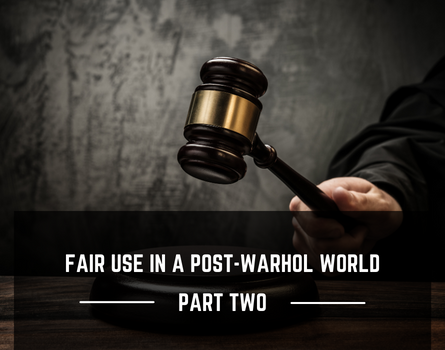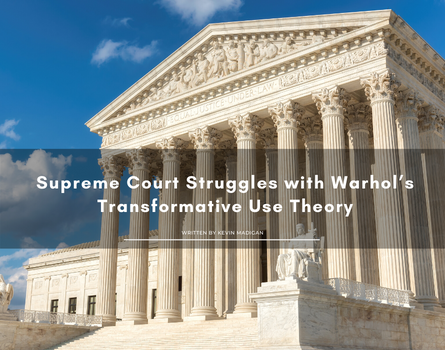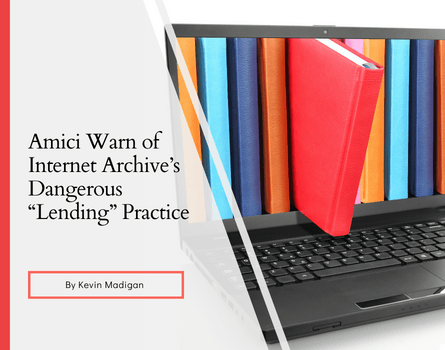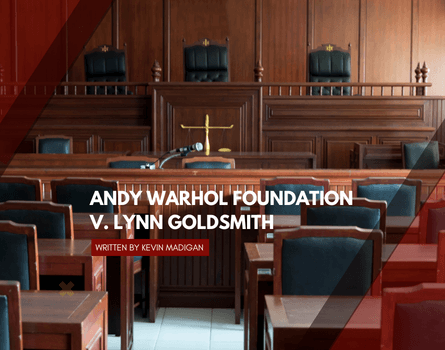In part one of this blog, we looked at a number of photography and documentary film copyright cases that have been decided since the Andy Warhol Foundation v. Goldsmith opinion was handed down, explaining that some may have come out differently if they were decided before the Supreme Court reined in the transformative use doctrine. We now turn to examining additional post-Warhol cases involving software code, misappropriation artist Richard Prince, another tattoo case, and a few other unique disputes.
The Software Cases
A significant fair use decision in a long-running software infringement case was handed down just two months after Warhol, where a district court, applying the Supreme Court’s analysis, found that a commercial, non-transformative use of computer code weighed heavily against fair use. In Oracle v. Rimini Street (known as Rimini II), the United States District Court for the District of Nevada ruled that Rimini Street repeatedly infringed Oracle’s copyrights, and the court issued a permanent injunction requiring Rimini to immediately and permanently discontinue various support programs and tools that were developed by copying Oracle’s enterprise software.
Assessing the purpose and character of Rimini’s use, the court found that Rimini copied Oracle’s code for the commercial purpose of developing competing products and was done “to save significant time, money, and effort.” Further, the court found that because Rimini’s tools were written to perform the same software-updating tasks that Oracle’s software was used for, the use could not be considered transformative. While the court determined that factor one weighed heavily against fair use, it continued with a thorough analysis of the other fair use factors before concluding that none of them weighed in favor of fair use. The decision is a testament to Warhol’s instruction that whether something is transformative or not does not control a fair use analysis, and that commerciality looms large.
In another software infringement case, Teradyne v. Astronics, a judge in the Central District of California recently granted the defendant’s motion for summary judgment, finding Astronics’ unauthorized use of Teradyne’s automated test equipment (ATE) computer code qualified as fair use. Quoting the Warhol decision, the court explains that “transformativeness is a matter of degree,” and while it found that Astronics’ use of Teradyne’s code was “less than ‘modestly transformative,’” it concluded that the first factor was “in equipoise, with just a slight lean towards fair use.” It’s important to note that the court recognized Warhol’s principle teaching that transformativeness—whether a use be highly or minimally transformative—is not the controlling factor in a factor-one or full fair use analysis. Ultimately, the court weighed the fair use factors appropriately, treating its transformative determination as just one step in its overall fair use analysis.
The Misappropriation Art Cases
One of the most noteworthy post-Warhol developments in fair use jurisprudence came in early 2024 when the notorious appropriation artist, Richard Prince, abruptly agreed to judgments against him in two cases in which he had earlier claimed his unauthorized use of the plaintiff photographers’ works was (among other things) transformative. If you’re not familiar with Richard Prince, suffice it to say that he’s made a career out of appropriating the work of others and often successfully invoking fair use defenses when sued.
In Graham v. Prince, photographer Donald Graham sued Prince in 2015 over the unauthorized use of Graham’s photograph, Rastafarian Smoking a Joint, in a portrait that was featured in a catalog, compilation work, and billboard. In McNatt v. Prince, photographer Eric McNatt sued Prince in 2016 over the unauthorized use of McNatt’s photograph in a portrait that was featured in an exhibition and a book. The district court, which noted the then-pending Supreme Court case, held in favor of the photographers in both cases in May 2023, denying Prince’s and co-defendant art galleries’ motions for summary judgment and finding that the fair use exception did not excuse the infringement.
While that order likely gave Prince and his attorneys pause, the Warhol opinion was handed down just one week later and sent shockwaves through the copyright world. Whatever hope Prince may have had for a decision that would help his case was clearly lost, and the once-reliable but misguided transformative fair use strategy that he and others relied on in the past was now highly tenuous.
Then, on January 25, 2024, on the eve of the Graham trial, the district court for the Southern District of New York issued final judgments against Prince in both the Graham and McNatt cases. As part of the judgment, Prince was held liable for willful infringement of the photographs and relinquished all defenses, including the fair use defense. This was a remarkable and significant departure from Prince’s history of fighting and prevailing in copyright infringement lawsuits on the basis of fair use, marking a new era in fair use jurisprudence in the wake of Warhol. In both Graham and McNatt, Prince was liable for damages in an amount equal to five times the respective retail prices of the infringing portraits in addition to other costs incurred by the plaintiffs. No doubt the Warhol decision influenced Prince to forego a fair use defense, and the outcome of the cases provide insights into how Warhol will impact future copyright cases involving fair use.
The Other Tattoo Case
Moving on to the other tattoo case—this one where the tattoo artist was the defendant—we have a situation where the court correctly applied portions of the Warhol decision at the summary judgment stage, but nonetheless sent the case to a jury that then came to a questionable fair use conclusion. In Sedlik v. Von Drachenberg, a copyright infringement suit was brought by photographer Jeff Sedlik in 2021 for the unauthorized use of his photo of Miles Davis in the preparation, promotion, and creation of a Miles Davis tattoo. The parties moved for summary judgment in 2022, with Von Drachenberg (“Von D”) arguing (among other things) that the tattoo she based on Sedlik’s photo was “highly transformative” because “it is imbued with a ‘new expression, meaning or message’ that is particular to [the tattoo’s recipient].”
Sedlik submitted a motion for reconsideration soon after the Warhol decision was handed down, and the court—applying the Supreme Court’s analysis—found that Von D’s use was unequivocally not transformative. The order explained that Warhol directs courts to examine the purpose of each use, rather than simply the aesthetic character of the resulting work. Importantly, when considering the creation of the tattoo, the court quotes from Warhol to make clear that “the degree of transformation required to make ‘transformative’ [fair] use of an original must go beyond that required to qualify as a derivative.” It then concluded that Von D’s use did not go beyond that required standard and that “[t]he evidence Defendants previously relied on to meet their burden no longer shows a transformative purpose after Warhol, and there is now an absence of evidence on the issue.”
Despite the clear blow to Von D’s fair use defense, the court (correctly) noted that transformativeness is merely one consideration under the first fair use factor and that triable issues of fact remained for a jury to decide. Unfortunately, the jury—which appeared sympathetic to Von D and undoubtedly had a loose grasp on copyright legal standards—found that the tattoo and some social media posts promoting Von D and her business were not substantially similar to Sedlik’s photograph and that Von D’s uses was not infringing.
While the outcome is disappointing, especially because of the objective similarities between the works (see comparison below), it was not completely unexpected due to the problems with the jury. However, the courts analysis and application of Warhol was a welcome development, and Sedlik has indicated that he will appeal the decision to the Ninth Circuit.

YouTube Icons, Standards Incorporated into Law, and the “Bad Art Friend”
Another noteworthy case that has applied Warhol is Stebbins v. Google, a dispute involving the unauthorized use of a YouTube video frame that was found to qualify as fair use. In Stebbins, a YouTuber and Twitch streamer brought infringement claims against another YouTuber who used one video frame (from a four-hour video) on the plaintiff’s YouTube channel as the icon for defendant’s own YouTube channel, which was critical of the plaintiff.
Considering the defendant’s motion to dismiss on fair use grounds, the court conducted a first-factor analysis that relied heavily on Warhol’s “central question” of whether a work merely supersedes the original works or instead add something new, with a further purpose or different character. Determining that the defendant’s use of the video frame was for the clear purpose of criticizing the plaintiff, the court then quotes from Warhol:
Criticism of a work, for instance, ordinarily does not supersede the objects of, or supplant, the work. Rather, it uses the work to serve a distinct end.
As to factor one, the court found that the defendant’s “criticism falls squarely into transformative use, as it serves a different purpose than Plaintiff’s livestream video.” The court went on to find that all four of the fair use factors favored the defendant and dismissed the copyright claims with prejudice.
Moving to a unique case involving the copying and distribution of privately developed safety standards that were subsequently incorporated into local laws, the U.S. Court of Appeals for the District of Columbia recently affirmed a district court decision that the non-commercial dissemination of such standards constitutes fair use. American Society of Testing Materials (ASTM) v. PublicResource.org (PRO)is a case that’s been winding its way through courts for the better part of a decade after the defendants were sued for copying ASTM’s copyrighted technical standards and displaying them online.
Assessing the purpose and character of PRO’s use, the court cites to Warhol’s explanation that the first factor “asks whether and to what extent the use at issue has a purpose or character different from the original.” It then found that PRO’s purpose was “to provide the public with a free and comprehensive repository of the law”—which it determined was distinct from ASTM’s purpose of “producing standards reflecting industry or engineering best practices.” While the court found that PRO’s use constituted a transformative, non-commercial purpose that weighed factor one in favor of fair use, it did not allow that determination to control its analysis of the remaining factors—which it may have prior to Warhol.
Another post-Warhol case with unique facts is Larson v. Dorland, also known as the “Bad Art Friend” case, which saw the author of a short story bring a declaration of noninfringement claim against the writer of a letter detailing her decision to donate a kidney who claimed that the short story infringed her copyright in the letter. Analyzing the purpose and character of Larson’s use, the District Court for the District of Massachusetts invoked Warhol to settle a disagreement between the parties on the proper framing of the transformative use inquiry. Larson argued that the proper inquiry should be whether the short story, titled The Kindness, taken in its entirety as a short story, serves a distinct purpose to Dorland’s original Facebook post of the letter. Alternatively, Dorland argued that the letter as it exists within the short story is put to the exact same use as Dorland’s original letter. Finding that the law post-Warhol was on Larson’s side, the court explained:
Applying the Andy Warhol Foundation framework to the facts of this case, the short story itself is the broader framework in which the allegedly infringing material—the letter—appears. Thus, the court must conduct its analysis in line with that final contextual reference point.
The court goes on to find that The Kindness was an obvious criticism of Dorland’s letter, and again citing Warhol, says that criticisms (and parodies) “do not ‘supersede the objects of, or supplant’ an original work in the same way that more flattering follow-on works might do.”
Finally, the court borrowed a term from the Warhol opinion, concluding that Larson’s use constituted an entirely “orthogonal” purpose—meaning it was independent of or irrelevant to Dorland’s purpose. The court’s post-Warhol focus on purpose and character related to the “final contextual reference point” is significant, and it could have a serious impact on other fair use cases, including those involving artificial intelligence, in the near future.
A Photography Case that Settled after Warhol
A case that applied Warhol’s factor-one analysis in response to a motion for summary judgment, but has since settled, is Campbell v. Gannett. In Campbell, a photographer brought infringement claims against multiple news outlets in 2022 for unauthorized use of her photograph of the first female coach in the National Football League. After the defendants moved for summary judgment, the district court for the Western District of Missouri issued an order finding that the defendants failed to meet their burden of showing they are entitled to judgment as a matter of law on their fair use affirmative defense.
Reaching that decision, the court analyzed the first fair use factor in light of the Warhol decision and found that defendants’ use of the photograph—which involved the posting a high-resolution screengrab of plaintiff’s photo on at least 14 different news publisher websites—was not transformative and that a reasonable trier of fact could conclude that the purpose and character of Defendants’ use of the photo was commercial. Assessing whether the use was transformative, the court explains that “there are no noticeable changes or distinctions, but rather the use was derivative if not virtually identical.” Importantly, the order compares the use at issue to that in Warhol, saying “even assuming the purpose of Defendants’ use was to make the [original photograph] available for commentary and criticism, that purpose itself, in the context of this case, is commercial.” While the case was set to go to a jury, it’s likely that the defendants reconsidered their options after Warhol was applied and decided to settle.
Conclusion
A review of the post-Warhol cases that have applied the Supreme Court’s reining in of transformative fair use reveal a broad spectrum of disputes involving all types of copyrighted works and secondary uses. It’s worth noting that, despite some critics’ claims that Warhol would threaten traditional fair uses, the cases show that clear-cut transformative, non-commercial uses that would have qualified as fair use before Warhol will continue to qualify as such. And while the decisions have come out both for and against fair use across the various cases, the clear takeaway is that courts’ factor-one analyses have become more nuanced since Warhol, and findings of transformativeness (correctly) no longer control the other factors.
If you aren’t already a member of the Copyright Alliance, you can join today by completing our Individual Creator Members membership form! Members gain access to monthly newsletters, educational webinars, and so much more — all for free!











